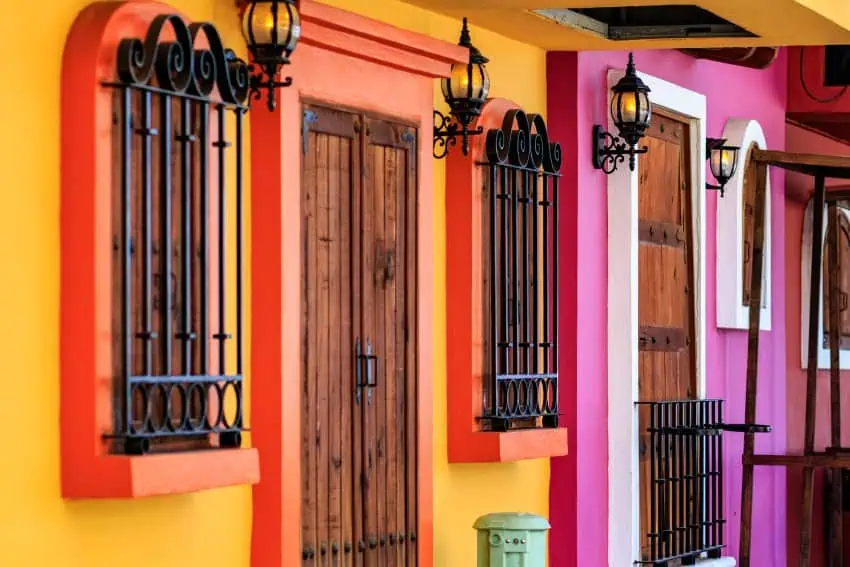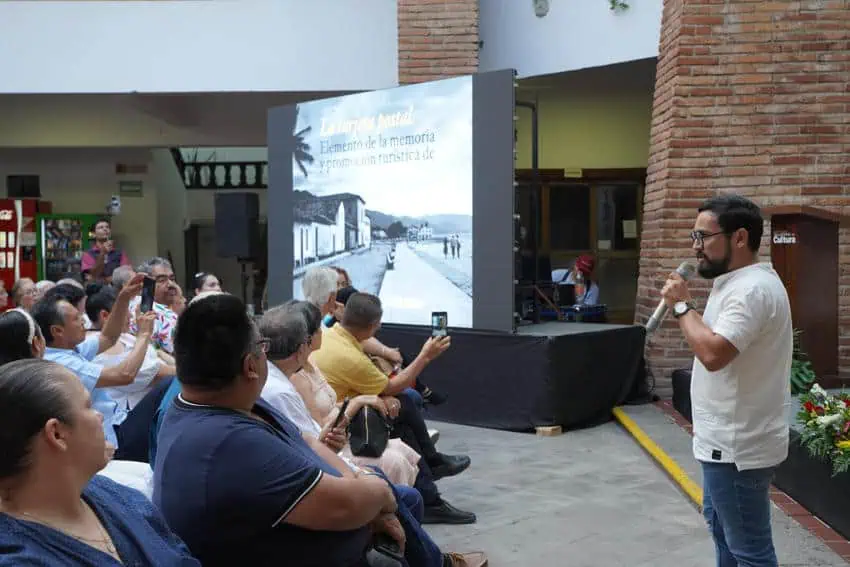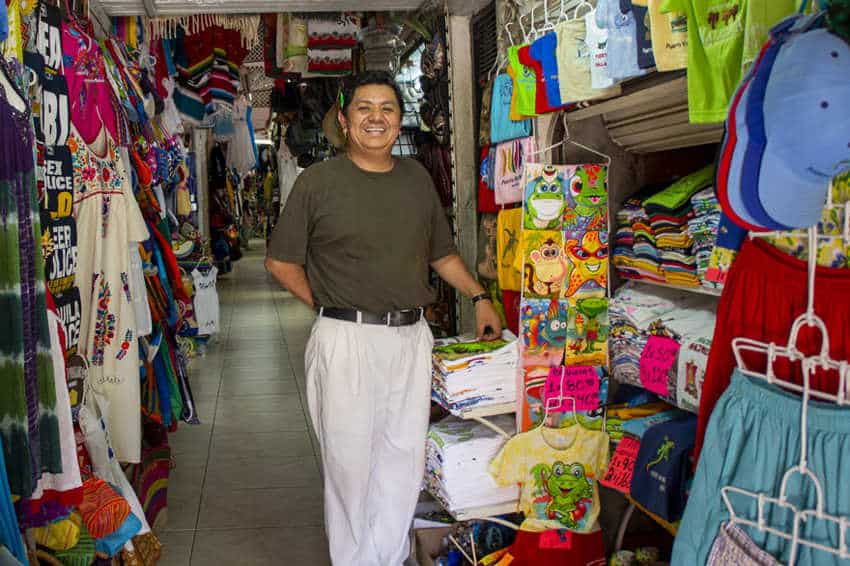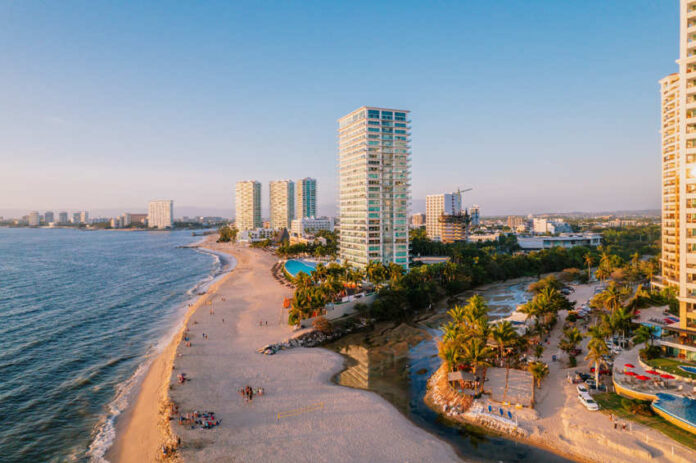Puerto Vallarta has become one of Mexico’s most recognizable tourism success stories. Its skyline silhouette of hacienda-style, all-inclusive resorts alongside luxury condos is a testament to its appeal among both sunseekers and investors. But long before resorts lined the Marina or high-rises climbed the Conchas Chinas cliffs, this port town was a rural fishing and trading village tucked between jungle-covered mountains and the curve of Banderas Bay.
But that history is in danger of being forgotten, thanks to decades of investment and development in Puerto Vallarta as a tourism destination. But there are still traces of that history, if you know where to look.

To walk the cobblestone streets of its historic center today is to glimpse the enduring spirit of a Vallarta that existed before the tourism boom — one of riverside washerwomen, stevedores at the pier and evenings spent in the plaza sharing stories and tamales.
“‘Old Vallarta’ is a fond memory and a collective recollection filled with nostalgia,” says Lic. Moisés Hernández López, the city’s official chronicler. “It was a period marked by strong community relations, a human scale in everyday life and a pace distinct from what urban development would later impose.”
Though difficult to pinpoint to one decade, “old Vallarta” is generally considered the era between 1920 — when Las Peñas officially became the municipality of Puerto Vallarta — and the early 1960s, just before the arrival of modern tourism.
Hernández describes a tightly knit community shaped by both its natural surroundings and its isolation.
“Puerto Vallarta’s uniqueness lay in its geographic isolation, combined with a strong community identity. The town was a crossroads of maritime trade and agricultural life, where cooperation and solidarity were everyday realities,” he says.
The early economy relied on fishing, copra (coquito oil) extraction, tobacco, plantains and the high-end wood trade. Tile-making, brickmaking, and the physically demanding port work defined the town’s labor force. Infrastructure milestones such as the arrival of electric lighting and the telegraph brought progress, but never eclipsed the community’s collective spirit.

That sense of cohesion still pulses in certain corners of the city. According to Hernández, Puerto Vallarta’s historic center — which is not, in fact, the Zona Romantica, but rather the area that stretches from Calle 31 de Octubre to the Cuale River — is one of the “last bastions” of the city’s earliest identity.
“It preserves the original layout of the old Villa de Las Peñas,” he explains, referring to the original 19th-century settlement that would become Puerto Vallarta.
Here, the parish church of Our Lady of Guadalupe rises above the rooftops, an enduring spiritual and architectural symbol. Hernández is quick to name the Saucedo Theater as another historic landmark worth attention.
Designed in 1922 by Italian architect Ángel Corsi — who also designed various historic buildings in Guadalajara — Puerto Vallarta’s Saucedo Theater became a gathering space for cinema, music and community events, with its significance lingering long after its lights dimmed.
As for the maritime heritage, the leading lights, popularly known as the Vallarta lighthouses, are still preserved. One is located on the malecón at Calle Morelos, and the other is on Matamoros Street at the foot of the hill. Both were built to guide ships and are now considered historical heritage sites. The Matamoros lighthouse, in particular, has been adopted as a popular lookout point for its views of the bay and the historic center.
But perhaps the deepest traces of old Vallarta are not found in stone or plaster, but in tradition. The December pilgrimages in honor of Our Lady of Guadalupe still wind through the streets, a tradition so integral to Vallarta’s identity that it has been recognized as intangible cultural heritage by the state of Jalisco.
Likewise, the paseadas of Las Palmas (picnic-style horseback rides hosted by long-established families) and the charrería equestrian tradition kept alive by local families like the Ibarrias, echo the town’s rural roots.
“There are still palaperos (trained constructors of palapas), tile-makers, and fishermen who carry on the old trades,” Hernández notes, though they face increasing pressure from modernization, he says.
“Simple but meaningful customs, such as chatting on the sidewalk, sharing food with neighbors, or participating in social gatherings, have gradually disappeared,” Hernández says. “The arrival of tourism transformed daily rhythms and altered the relationship between the space and its inhabitants.”

And that, he warns, is the biggest threat to Vallarta’s soul: Rapid growth, land speculation and short-sighted development have often treated the city’s memory as expendable.
“The past has too often been seen as a hindrance to development, rather than as a foundation for the future,” he says. “But memory, when well managed, can be a valuable tourism and economic asset.”
Still, signs of hope remain. Preservation efforts have gained momentum, both from official bodies and grassroots collectives. The historic center is a protected zone, even if enforcement is inconsistent. Nonprofit groups and academics are working to catalog buildings in Puerto Vallarta, interview elders and train new generations of historians.
“There’s a growing network of artists, architects and scholars committed to preserving our heritage,” says Hernández. “And young people are beginning to show interest, too, recognizing that history isn’t something distant but something you can see in the window grills, the rooftops, and the voices of your neighbors.”
If you want to experience the old Puerto Vallarta, he suggests starting with an early morning stroll through the historic center. Cross the suspension bridge over the Cuale. Visit the market and taste its food. Climb the hill to the Matamoros lighthouse for a quiet moment of reflection. And, most importantly, talk to the locals — from the fishermen and the vendors to the abuelos on park benches.
“There, between words and silence,” he says, “you will find a true haven of Puerto Vallarta.”
As the city hurtles into its next chapter, shaped by foreign investment, real estate speculation and rapid expansion, these last bastions of Vallarta’s history serve as both anchor and guidepost. They remind us that heritage is not merely what we preserve in stone but also what we choose to carry forward in spirit.
Because without memory, even paradise can lose its way.
Meagan Drillinger is a New York native who has spent the past 15 years traveling around and writing about Mexico. While she’s on the road for assignments most of the time, Puerto Vallarta is her home base. Follow her travels on Instagram at @drillinjourneys or through her blog at drillinjourneys.com.
